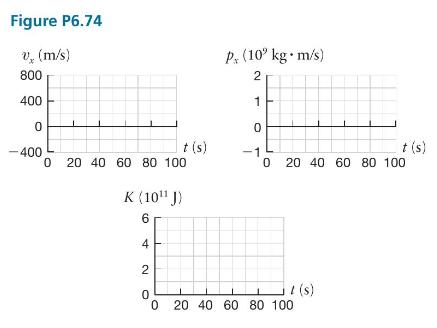Assume that the asteroids in Problem 74 collide totally inelastically. Answer the same questions posed in that
Question:
Assume that the asteroids in Problem 74 collide totally inelastically. Answer the same questions posed in that problem for this situation.
Data from Problem 74
Asteroid A1, \(m_{\mathrm{A} 1}=3.60 \times 10^{6} \mathrm{~kg}\), and asteroid \(\mathrm{A} 2\), \(m_{\mathrm{A} 2}=1.20 \times 10^{6} \mathrm{~kg}\), collide head-on in space. Approximate (rather poorly) the collision as being elastic. Observers watch the event from two space platforms. An observer on platform Q measures the speed of A1 to be \(528 \mathrm{~m} / \mathrm{s}\) and the speed of A2 to be \(315 \mathrm{~m} / \mathrm{s}\), and sees A2 heading directly toward A1. The second platform, platform \(\mathrm{Z}\), is at rest in the zero-momentum reference frame of the asteroids.
(a) What is the combined momentum of the asteroids measured from platform Q?
(b) What is the velocity of platform \(\mathrm{Z}\) relative to platform Q?
(c) Draw velocity, momentum, and kinetic energy graphs for the asteroids as viewed from platform Z, using graphs like those in Figure P6.74. Assume the collision begins at \(t=40 \mathrm{~s}\) and lasts for \(20 \mathrm{~s}\).
(d) Add a curve for the momentum of the system to the momentum graph you constructed in part \(c\).
(e) What happens to the kinetic energy when its curve bends?
(f) On your kinetic energy graph from part \(c\), show what an observer on platform Z sees for the convertible and nonconvertible kinetic energies of the asteroids.
(g) Repeat parts \(c-f\) as seen from platform Q.
Step by Step Answer:





